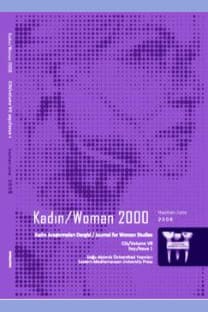Türkiye’de İstihdam Edilen ve Edilmeyen Kadınların Temsiliyet Kısa Yolu Üzerine Bir Araştırma
Bu çalışmada bireylerin belirsizlik altında aldığı kararlarında temsiliyet kısa yolundan etkilenip etkilenmediği, istihdam edilen ve edilmeyen kadınlar çerçevesinde ele alınmıştır. Bunun için doktor olan kadınların ve ev kadınlarının karar alırken önsel bilgiyi kullanıp kullanmadıkları incelenmiştir. Çalışmanın ana amacı kadının emek piyasasındaki dezavantajlı konumunu anlamaktır. Çalışmanın literatüre temel katkısı ise kadınların rasyonellikten sapmalarında temsiliyet kısa yolunun etkisini keşfetmektir. Uygulama yapılırken online anket tekniğiyle istihdam edilmiş ve edilmemiş 428 kadına temsiliyet kısa yolunu ölçmek için on dört soru sorulmuştur. Analiz sonucu literatüre uygun olup, bireylerin belirsizlik altında temsiliyet kısa yolu ile karar alarak rasyonellikten saptığı sonucuna ulaşılmıştır.
A Case Study on Representativeness Heuristic in Employed and Unemployed Women in Turkey
This study discusses whether decisions made under uncertain conditions are affected by the representativeness heuristic in terms of employed and unemployed women. For this purpose, we investigated whether female physicians and housewives use prior information when making predictions. The main purpose of study is to understand the disadvantaged position of women in the labor market. The study’s main contribution to the literature is to explore the effect of the representativeness heuristic on women’s deviations from rationality. To measure the representativeness heuristic, 14 questions were asked to 428 employed and unemployed women with an online survey. Our results were consistent with the literature, and we concluded that decisions made under uncertain conditions are influenced by the representativeness heuristic, resulting in deviations from rationality.
___
- Cherry, K. (2021, April 10). What Is the Representativeness Heuristic? Verywel Mind. https://www.verywellmind.com/representativeness-heuristic-2795805 Access: 28.12. 2021.
- Gigerenzer, G. (2018). The Bias Bias in Behavioral Economics. Review of Behavioral Economics, 5(3-4): 303-336.
- Gigerenzer, G. (2008). Why Heuristics Work. Perspectives on Psychological Science, 3(1):20-29.
- Gotlieb, R. et al. (2019). Gender Differences in How Physicians Access and Process Information. Gynecologic Oncology Reports, 27:50-53.
- Hazra, A. (2017). Using the Confidence Interval Confidently. Journal of Thoracic Disease. 9(10):4125-4130.
- Hillier, F. S. & Lieberman, G. J. (2010). Introduction to Operations Research (9th ed). New York: McGraw-Hill.
- Kahneman, D. & Tversky, A. (1972). Subjective Probability: A Judgment of Representativeness. Cognitive Psychology. 3(3):430-454.
- Kahneman, D. & Tversky, A. (1973). On the Psychology of Prediction. Psychological Review. 8(4):237-251.
- Kahneman, D. (2011). Thinking, Fast and Slow. London: Allen Lane.
- Katsikopoulos, K.V. (2011). Psychological Heuristics for Making Inferences: Definition, Performance, and the Emerging Theory and Practice. Decision Analysis, 8(1):10-29.
- Laver, M. & Sergenti, E. (2012). Party Competition: An Agent-Based Model. Princeton, NJ: Princeton University Press.
- Naderifar, M., Goli, H., & Ghaljaie, F. (2017). Snowball Sampling: A Purposeful Method of Sampling in Qualitative Research. Strides in Development of Medical Education, 14:e67670.
- Organisation for Economic Co-operation and Development (2020). Health Care Resources: Physiciansby Age and Gender. https://stats.oecd.org/index.a spx?queryid=30172. Access: 25.05.2021.
- Robbins, S.P. & Timothy, A.J. (2013). Organizational Behavior (15th ed). New Jersey: Pearson.
- Schober, P., Boer, C. & Schwarte, L.A. (2018). Correlation Coefficients: Appropriate Use and Interpretation. Anesthesia & Analgesia, 126(5):1763-1768.
- Shah, A.K., & Oppenheimer, D.M. (2008). Heuristics Made Easy: An Effort- Reduction Framework. Psychological Bulletin, 134(2): 207-222.
- Simon, H. A. (1955). A Behavioral Model of Rational Choice. The Quarterly Journal of Economics. 69(1):99-118.
- Tune, G.S. (1964). Response Preferences: A Review of Some Relevant Literature. Psychological Bulletin. 61(4):286-302.
- Turkish Statistical Institute. (2020). Reasons for Not Included in the Labor Force 2019/Women. https://tuikweb.tuik.gov.tr/PreTablo.do?alt_id=1 007. Access: 10.06.2021
- Tversky, A. & Kahneman. D. (1974). Judgment under Uncertainty: Heuristics and Biases. Science. 185(4157):1124-1131.
- Tversky, A. & Kahneman, D. (1983). Extensional Versus Intuitive Reasoning: The Conjunction Fallacy in Probability Judgment. Psychological Review, 90(4):293- 315.
- Wagenaar, W.A. (1970). Appreciation of Conditional Probabilities in Binary Sequences. Acta Psychologica, 34(2-3):348-356.
- Young, H.P. (2008). Adaptive Heuristics. In, Durlauf, S.N & Blume, L.E. (eds). The New Palgrave Dictionary of Economics, (2nd ed.) New York: Palgrave Macmillan.
- ISSN: 1302-9916
- Yayın Aralığı: Yılda 2 Sayı
- Başlangıç: 2000
- Yayıncı: Doğu Akdeniz Üniversitesi Kadın Araştırmaları ve Eğitimi Merkezi
Sayıdaki Diğer Makaleler
Siberfeminizm Çerçevesinde Yeni Medyada Kadın Gazeteciler Üzerine Bir Araştırma
Türkiye’de İstihdam Edilen ve Edilmeyen Kadınların Temsiliyet Kısa Yolu Üzerine Bir Araştırma
Aysun YERLİKAYA, Deniz ÖZYAKIŞIR
Heteroseksüel Gençlerin Flört Şiddeti Üzerine Söylemleri
Ölümcül Babalar: Yalçın Tosun Öykülerinde Babalık Performansları
